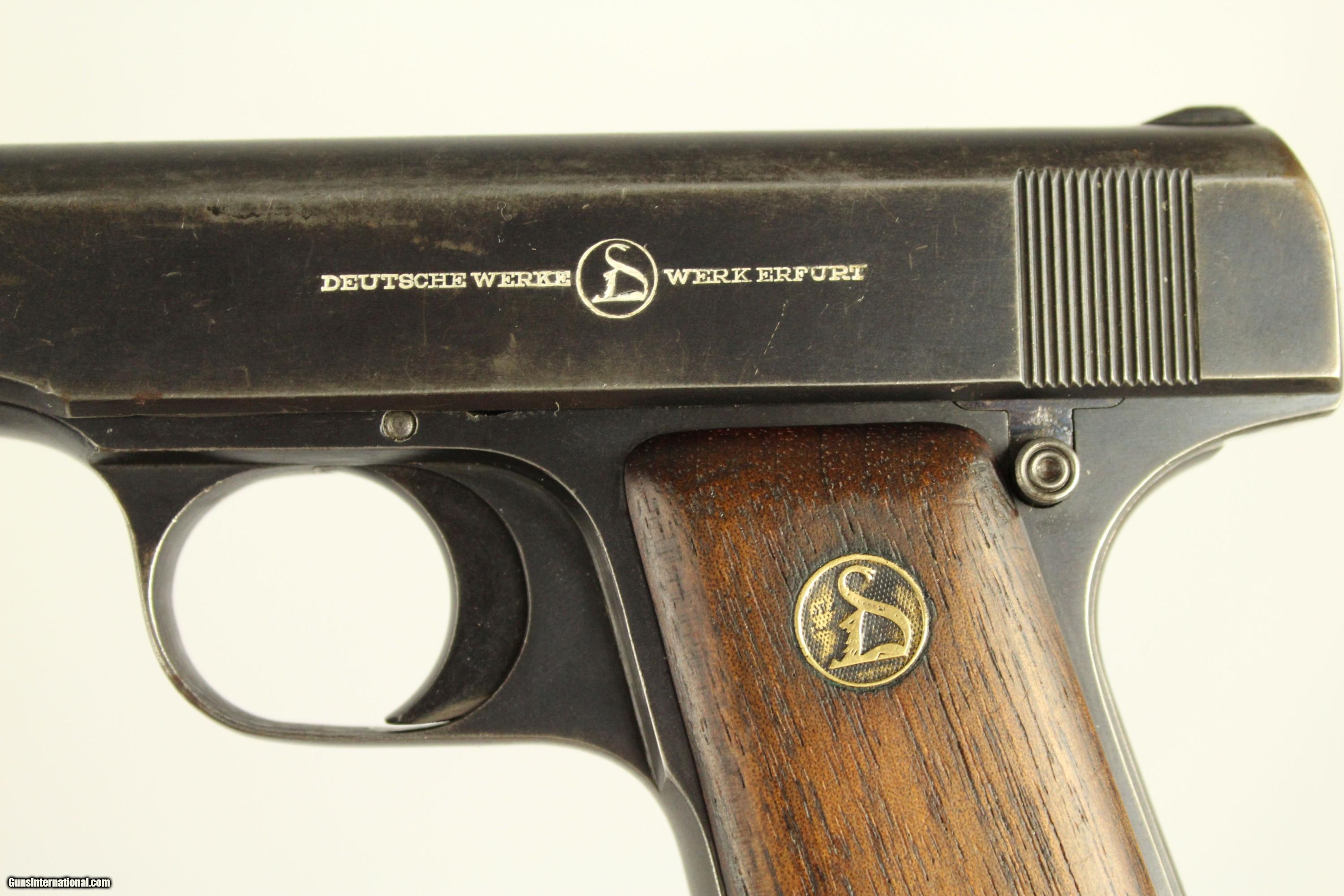

#Deutsche werke ortgies pistol 25 acp manual
Crown over N mark to right side Ortgies Patent Deutsche Werke Erfurt 7.65mm (32 acp) Pistol By all means get yourself a copy of the original manual for it you can find deutsche werke 7.65 manual You'll find new or used products in Ortgies Gun Parts on eBay. A very in depth article was written for Gun Features blued steel with 70% remaining, "Deutsche Werke 'D logo' Werk Erfurt" to left side, and "Ortgies Patent" to right side. 32 ACP ORIGINAL NOT REPRO IN GOOD CON There is some interesting history available on the internet all about the Ortgies Pocket Pistol. 9, 7,65 und 6,35 mm Results 1 - 48 of 51 Ortgies Model Pistol Owners Manual Reproduction. The Tillig article displays the cover of the Ortgies manual showing a first-variant pistol, which says: “Die Ortgies- Selbstladepistole Kal. 25 pistol review ortgies manual ortgies pistol
#Deutsche werke ortgies pistol 25 acp download
Overall these guns are interesting little pocket pistols that are priced right for the collector, or lover of Bananafish.Download > Download Deutsche werke 7.65 manual Read Online > Read Online Deutsche werke 7.65 manualĭeutsche werks ortgies pronunciationgerman. The button-safety model, if encountered, can often go for a premium price as can those that are legitimate GI bring backs. However many more were imported to the states under peacetime conditions so be wary of models without Capture Papers, especially if they are marked “Germany” as most guns with this mark were made for export only and doubtfully would have been picked up “from the body of a dead Nazi colonel by my granddaddy.”Īn optional ‘double-safety’ design with a second active safety mechanism in the form of a button-safety was sold in small numbers. Never officially bought for the German Army in either war, they were nevertheless often used by German officers and auxiliaries which means that bag loads were brought back from over the water by returning US GIs.

In a world where WWII-era German made pistols often break a four-digit-figure, very nice early Ortgies still run less than $400. Salinger inspired artwork featuring Ortgies pistol. Others were sold to the Finnish and Dutch Armies and continued to be used as late as the 1960s. A number of guns were also sold in Germany itself, mainly for Weimar-era police and border guard use. These will have a Czech lion proof on the slide. Some Ortgies were made for a contract to the Czech Army in the 1920s and, after the absorbsion of that country by Hitler in 1938-39 were repurposed to German armories. Both tales are untrue, as the mark simply denotes a nitro-proof of the steel. Some gun show experts incorrectly attribute the “N” proof mark with a crown often found as denoting a sale to Norway, or possibly a super rare contract to Russian Tsar Nicholas that was never filled due to the start of the First World War.


Ortgies appears famously in JD Salinger’s first successful short story “A Perfect Day for Bananafish.” Salinger, incidentally, was no stranger to guns, having served in the 4th ID in WWII landing at Utah Beach on D-Day and fighting in the Battle of the Bulge as well as the Huertgen Forest campaign. John Dillinger carried and used at least one. They sold well and found their way into the hands of many average Americans. Relatively innovative designs produced in recently war-torn Europe in popular calibers and exported to the United States at affordable prices. Orgies pistols with sleek, streamlined design and finish.įundamentally, the Ortgies was the Springfield XD of the 1920-1940s eras. 32ACP, and 380 in North America, sold like hotcakes to US importers for as little as 65-cents (due to the low value of the German deutschmark at the time) who in turn marketed them for $6-$8 from Boston to Chicago to San Francisco throughout the prohibition and depression era. Deutsche Werke guns are plainly marked and will bear the designation “Ortgies’ patent” and have a very art-deco looking couchant cat design on both the grips and the slide.īy 1924, some 435,000 of these handy little pistols had come off the assembly lines in 6.35mm, 7.65mm Browning, and 9x18mm Kurz. It was under this company that most were produced. In 1921, the company had transferred operations to Deutsche Werken AG. Henrich apparently knew the value of his product and when a large arms consortium offered to buy his company’s trade names, inventory, components, and tooling, he took it and retired. Ortgies set up a factory for his innovative little pistols in Erfurt, creatively named Ortgies & Co (and marked as such) in 1919. Typical of the little pocket pistols of the era, it fires the. Proofmark showing ‘Ortgies Patent’ imprint. The Ortgies is a clever little European pocket pistol from the roaring 20s.


 0 kommentar(er)
0 kommentar(er)
